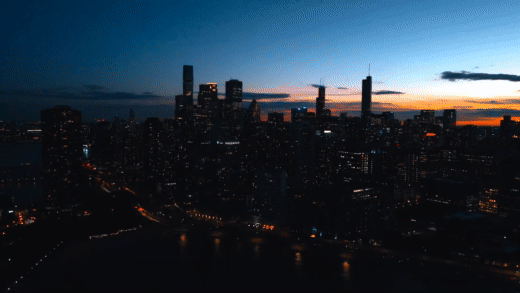
AI Reimagines Toronto, Vancouver and Montreal in Dune-Like Universe as TikTok Climate Change searches SOAR 3,100% in just 30 days!
Dune: Part Two, is already reaching massive box office milestones surpassing $150million, and TikTok searches for the ‘new dune movie’ have soared 4,606% in just 30 days. In the past month, searches around the movie’s desert-like filming locations have increased 141%, while queries related to ‘climate crisis 2024’ have spiked 3,100% in the social media platform.
Known for its amazing cinematography and striking desert visuals, Dune’s landscape is something that makes it instantly recognisable. But the movie’s vast deserts are more than just a stunning backdrop. They serve as a stark warning of a potential future for our own world impacted by climate change.
The 7 Cities MOST At Risk: A Glimpse into a Deserted 'Dune'-ified Future
1. Toronto, Ontario
Toronto, once known for its predictable seasons, is grappling with the impacts of climate change. The city is experiencing a rise in average temperatures, leading to more frequent and intense heat waves that strain infrastructure and threaten public health. Winters are becoming shorter and less severe, with unpredictable precipitation patterns bringing both heavier downpours that overwhelm storm drains and periods of drought that stress green spaces and water resources.

2. Las Vegas, Nevada
Across Nevada, people are starting to feel the effects of the climate crisis, with the state warming about 2.8°F on average since 1970. According to Climate Central, average summertime temperatures in Las Vegas have increased by 5.8°C over the last half century, ranking as the second fastest-warming city in the U.S, below Reno.

3. New York City, New York State
The Big Apple faces a scorching future. Data shows the city, already hit by droughts every 2-3 years, could see temperatures jump 4.7°C by the 2030s – nearly double the historical warming rate. This, coupled with more frequent and intense droughts, will result in a hotter, drier New York with potential water shortages, agricultural issues, and public health risks.

4. Dubai, United Arab Emirates
Rising desertification threatens ecosystems and food supply in Dubai where 80% of country is already desert, with no natural primary forests. In 2010, the One Million Trees initiative was launched to increase green areas in Dubai through afforestation. At its peak, the tree nursery spanned more than 130,000 sq metres, however, according to nursery workers, close to 80% of the trees planted there have died due to unmanageable environmental conditions caused by global warming.

5. Barcelona, Spain
According to the UN Convention to Combat Desertification, 75% of Spain's land is battling climatic conditions that could lead to desertification, making it the European nation most threatened by the problem. In the next 10 years, Spanish city Barcelona faces increasing risk from extreme heat, reduced water availability, more flooding and shrinking beaches and coastal protection due to sea level rises.

6. Madrid, Spain
A new Swiss study warns Madrid faces a scorching future. Unchecked emissions could push the city's climate towards that of present-day Marrakesh by 2050. This dramatic shift from hot summers and cool winters to a permanently hot and dry climate raises concerns about Madrid's long-term sustainability and its residents' way of life.

7. Sydney, Australia
Sydney's summers are getting hotter, and the future looks even sweatier. Over the past 30 years, global warming has pushed Sydney's average summer temperatures upwards. If we don't cut emissions and climate change continues on its current trajectory, a scorching future awaits. By 2100, summer temperatures could surge by a significant 2.6°C, transforming Sydney's climate into something more akin to present-day Papua New Guinea.
Canada’s Changing Climate: What Key Cities Could Look Like With ‘Dune-Ification’
1. Vancouver, British Columbia
Like many coastal, seaport cities, Vancouver is feeling the brunt of climate change. Rising temperatures are a key concern, with projections for hotter, drier summers and wetter winters. Sea levels are also on the rise, threatening coastal areas with flooding. The City of Vancouver itself is planning for up to a 1.4 meter rise by 2100, which would inundate parts of the city during major storms.

2. Montreal, Quebec
Montreal's climate is expected to experience significant changes due to climate change. Average temperatures are projected to rise by 1.5-2.3°C by mid-century, leading to more frequent and intense heat waves. This can strain infrastructure, harm public health, and disrupt outdoor activities. The city is also likely to see increased precipitation extremes, with heavier rainfall events and the potential for more flooding.
3. Niagara Falls, Ontario
Studies suggest Lakes Erie and Ontario, feeding the Niagara River, could see water levels drop a meter by 2050 due to increased evaporation and less snowfall. This decline could impact the Falls' power and beauty. Additionally, more extreme weather events like flooding could damage surrounding areas. While milder winters might extend tourism, climate change poses significant ecological and aesthetic challenges.
























.gif)


%20(1).png)


.png)


%20(1).png)

0 Comments